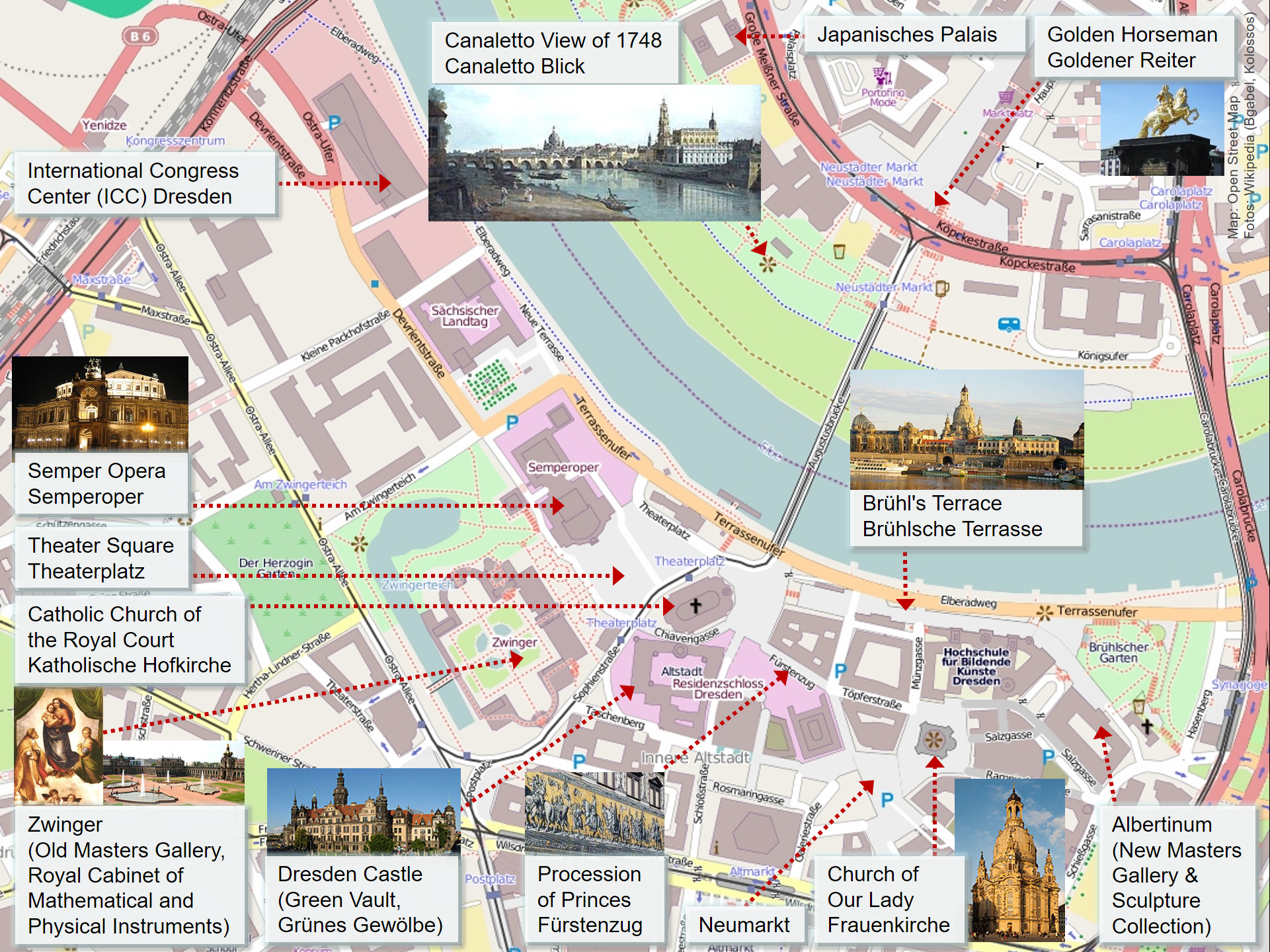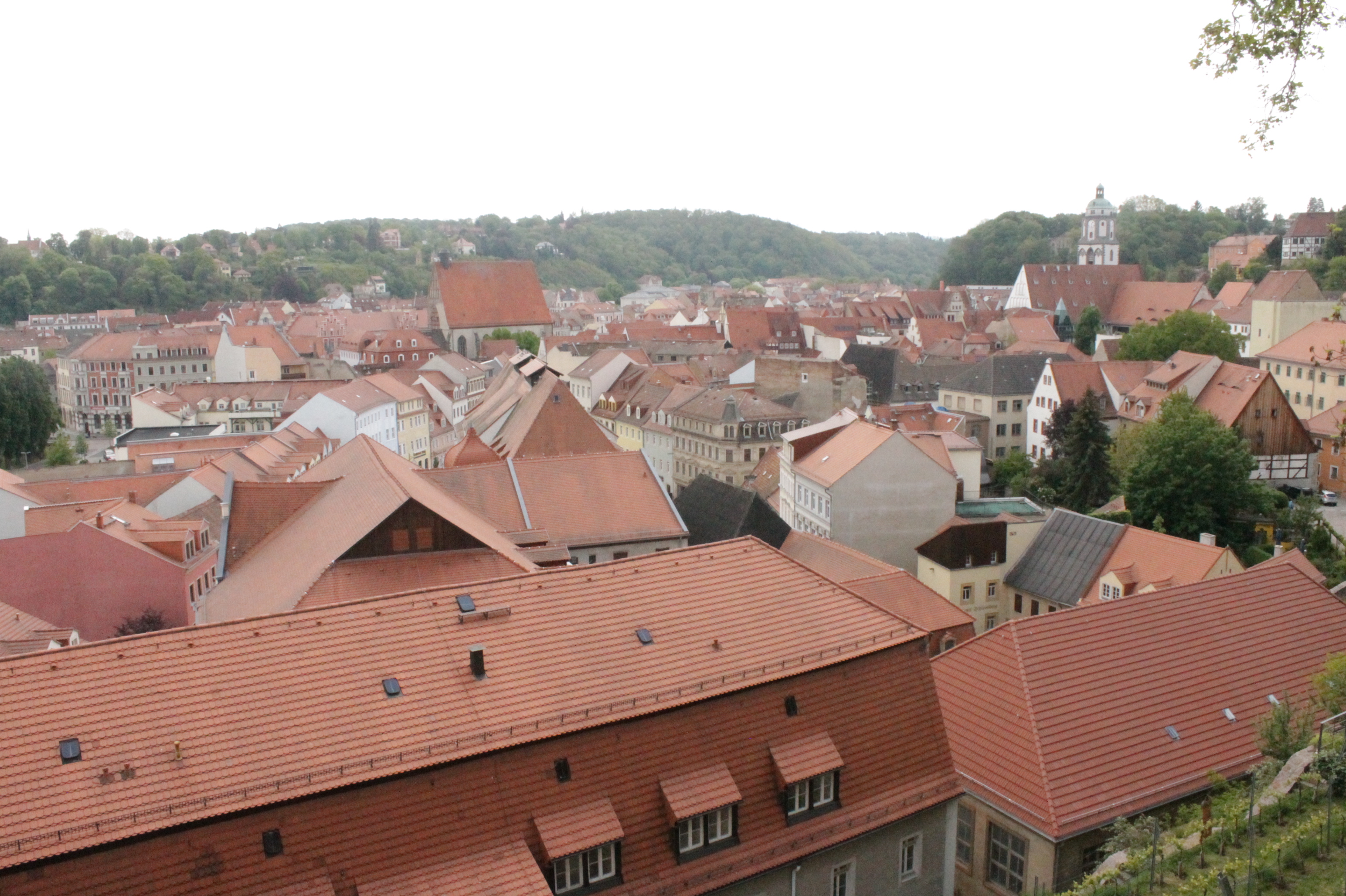|
Staircase Tower
A staircase tower or stair tower (german: Treppenturm, also ''Stiegenturm'' or ''Wendelstein'') is a tower-like wing of a building with a circular or polygonal plan that contains a stairwell, usually a helical staircase. History Only a few examples of staircase towers have survived from ancient times (e.g. on the Imperial Baths in Trier); staircases were often superfluous on the only single-storey buildings or were built into the outer walls of buildings that were often several feet thick. This tradition continued in the keeps (''donjons''), churches and castles of the early and high Middle Ages; and this situation only changed with the increasing construction of purpose-built and generally rather undecorated staircase towers of the High and Late Middle Ages ( Romanesque and Gothic architecture styles). Since the Renaissance period, staircase towers were markedly more decorative and representative of status. Stairs were now rarely hidden or built externally, but there were bo ... [...More Info...] [...Related Items...] OR: [Wikipedia] [Google] [Baidu] |
Château De Blois
A château (; plural: châteaux) is a manor house or residence of the lord of the manor, or a fine country house of nobility or gentry, with or without fortifications, originally, and still most frequently, in French-speaking regions. Nowadays a ''château'' may be any stately residence built in a French style; the term is additionally often used for a winegrower's estate, especially in the Bordeaux region of France. Definition The word château is a French word that has entered the English language, where its meaning is more specific than it is in French. The French word ''château'' denotes buildings as diverse as a medieval fortress, a Renaissance palace and a fine 19th-century country house. Care should therefore be taken when translating the French word ''château'' into English, noting the nature of the building in question. Most French châteaux are "palaces" or fine "country houses" rather than "castles", and for these, the word "château" is appropriate in Eng ... [...More Info...] [...Related Items...] OR: [Wikipedia] [Google] [Baidu] |
Dresden
Dresden (, ; Upper Saxon: ''Dräsdn''; wen, label=Upper Sorbian, Drježdźany) is the capital city of the German state of Saxony and its second most populous city, after Leipzig. It is the 12th most populous city of Germany, the fourth largest by area (after Berlin, Hamburg and Cologne), and the third most populous city in the area of former East Germany, after Berlin and Leipzig. Dresden's urban area comprises the towns of Freital, Pirna, Radebeul, Meissen, Coswig, Radeberg and Heidenau and has around 790,000 inhabitants. The Dresden metropolitan area has approximately 1.34 million inhabitants. Dresden is the second largest city on the River Elbe after Hamburg. Most of the city's population lives in the Elbe Valley, but a large, albeit very sparsely populated area of the city east of the Elbe lies in the West Lusatian Hill Country and Uplands (the westernmost part of the Sudetes) and thus in Lusatia. Many boroughs west of the Elbe lie in the foreland of th ... [...More Info...] [...Related Items...] OR: [Wikipedia] [Google] [Baidu] |
Dresden Castle
Dresden Castle or Royal Palace (german: Dresdner Residenzschloss or ) is one of the oldest buildings in Dresden, Germany. For almost 400 years, it was the residence of the electors (1547–1806) and kings (1806–1918) of Saxony from the Albertine House of Wettin as well as Kings of Poland (1697–1763). It is known for the different architectural styles employed, from Baroque to Neo-renaissance. Today, the residential castle is a museum complex that contains the Historic and New Green Vault, the Numismatic Cabinet, the Collection of Prints, Drawings and Photographs and the Dresden Armory with the Turkish Chamber. It also houses an art library and the management of the Dresden State Art Collections. History The original castle was a Romanesque keep, built around 1200. The ''Hausmannsturm'' was built at the beginning of the 15th century. From 1468 until 1480, the keep was extended by the master builder, Arnold von Westfalen, becoming an enclosed four-wing construction. In ... [...More Info...] [...Related Items...] OR: [Wikipedia] [Google] [Baidu] |
Hesse
Hesse (, , ) or Hessia (, ; german: Hessen ), officially the State of Hessen (german: links=no, Land Hessen), is a state in Germany. Its capital city is Wiesbaden, and the largest urban area is Frankfurt. Two other major historic cities are Darmstadt and Kassel. With an area of 21,114.73 square kilometers and a population of just over six million, it ranks seventh and fifth, respectively, among the sixteen German states. Frankfurt Rhine-Main, Germany's second-largest metropolitan area (after Rhine-Ruhr), is mainly located in Hesse. As a cultural region, Hesse also includes the area known as Rhenish Hesse (Rheinhessen) in the neighbouring state of Rhineland-Palatinate. Name The German name '' Hessen'', like the names of other German regions (''Schwaben'' "Swabia", ''Franken'' "Franconia", ''Bayern'' "Bavaria", ''Sachsen'' "Saxony"), derives from the dative plural form of the name of the inhabitants or eponymous tribe, the Hessians (''Hessen'', singular ''Hesse''). The g ... [...More Info...] [...Related Items...] OR: [Wikipedia] [Google] [Baidu] |
Frankfurt-Ostend
Ostend is a quarter of Frankfurt am Main, Germany. It is part of the ''Ortsbezirk Innenstadt IV''. The name means "East End''. The Frankfurt Zoological Garden, the East Harbor, the former Großmarkthalle and the Frankfurt School of Finance & Management are some of the well-known institutions in the Ostend. The European Central Bank has also built their new seat close to the Großmarkthalle at the Main river. The Hoch Conservatory Dr. Hoch's Konservatorium – Musikakademie was founded in Frankfurt am Main on 22 September 1878. Through the generosity of Frankfurter Joseph Hoch, who bequeathed the Conservatory one million German gold marks in his testament, a school for ... are also located in the Ostend. References Districts of Frankfurt {{Hesse-geo-stub ... [...More Info...] [...Related Items...] OR: [Wikipedia] [Google] [Baidu] |
Frankfurt Am Main
Frankfurt, officially Frankfurt am Main (; Hessian dialects, Hessian: , "Franks, Frank ford (crossing), ford on the Main (river), Main"), is the most populous city in the States of Germany, German state of Hesse. Its 791,000 inhabitants as of 2022 make it the List of cities in Germany by population, fifth-most populous city in Germany. Located on its namesake Main (river), Main River, it forms a continuous conurbation with the neighboring city of Offenbach am Main and Frankfurt Rhein-Main Regional Authority, its urban area has a population of over 2.3 million. The city is the heart of the larger Rhine-Main metropolitan region, which has a population of more than 5.6 million and is Germany's Metropolitan regions in Germany, second-largest metropolitan region after the Rhine-Ruhr region. Frankfurt's central business district, the Bankenviertel, lies about northwest of the geographic centre of the EU, geographic center of the EU at Gadheim, Lower Franconia. Like France and Franc ... [...More Info...] [...Related Items...] OR: [Wikipedia] [Google] [Baidu] |
Jakob Latscha
Jakob may refer to: People * Jakob (given name), including a list of people with the name * Jakob (surname), including a list of people with the name Other * Jakob (band), a New Zealand band, and the title of their 1999 EP * Max Jakob Memorial Award, annual award to scholars in the field of heat transfer * Ohel Jakob synagogue (Munich) See also * Jacob (other) Jacob is an important figure in Abrahamic religions. Jacob may also refer to: People * Jacob (name), a male given name and surname, including a list of variants of the name ** Jacob (surname), including a list of people with the surname ** Jacob ... * St. Jacob (other) {{disambiguation ... [...More Info...] [...Related Items...] OR: [Wikipedia] [Google] [Baidu] |
Lutherstadt Wittenberg
Wittenberg ( , ; Low Saxon: ''Wittenbarg''; meaning ''White Mountain''; officially Lutherstadt Wittenberg (''Luther City Wittenberg'')), is the fourth largest town in Saxony-Anhalt, Germany. Wittenberg is situated on the River Elbe, north of Leipzig and south-west of Berlin, and has a population of 46,008 (2018). Wittenberg is famous for its close connection with Martin Luther and the Protestant Reformation, for which it received the honourific '' Lutherstadt''. Several of Wittenberg's buildings are associated with the events, including a preserved part of the Augustinian monastery in which Luther lived, first as a monk and later as owner with his wife Katharina von Bora and family, considered to be the world's premier museum dedicated to Luther. Wittenberg was also the seat of the Elector of Saxony, a dignity held by the dukes of Saxe-Wittenberg, making it one of the most powerful cities in the Holy Roman Empire. Today, Wittenberg is an industrial centre and popular tour ... [...More Info...] [...Related Items...] OR: [Wikipedia] [Google] [Baidu] |
Augusteum Und Lutherhaus Wittenberg
The Lutherhaus is a writer's house museum in Lutherstadt Wittenberg, Germany. Originally built in 1504 as part of the University of Wittenberg, the building was the home of Martin Luther for most of his adult life and a significant location in the history of the Protestant Reformation. Luther was living here when he wrote his ''95 Theses''. The Augusteum is an expansion to the original building that was constructed after Luther's death to house a Protestant seminary and library which still exist today. Since 1996, both buildings have been recognized as UNESCO World Heritage Sites along with other sites associated with Martin Luther in Wittenberg and Eisleben, because of their religious significance and testimony to one of the most influential figures of medieval Europe. History When the University was opened in 1503, the monks of the Order of Saint Augustine were given land previously belonging to the Heiligegeisthospital (Hospital of the Holy Spirit) located near the Elster Gate ... [...More Info...] [...Related Items...] OR: [Wikipedia] [Google] [Baidu] |
Meißen
Meissen (in German orthography: ''Meißen'', ) is a town of approximately 30,000 about northwest of Dresden on both banks of the Elbe river in the Free State of Saxony, in eastern Germany. Meissen is the home of Meissen porcelain, the Albrechtsburg castle, the Gothic Meissen Cathedral and the Meissen Frauenkirche. The ''Große Kreisstadt'' is the capital of the Meissen district. Names * german: Meißen * french: Meissen, ou, selon l'orthographe allemande: ''Meißen''; en français suranné: ''Misnie'' * la, Misnia, Misena, Misnensium * pl, Miśnia * cs, Míšeň * hsb, Mišno * dsb, Mišnjo * zh, 迈森 (pinyin: ) History Meissen is sometimes known as the "cradle of Saxony". It grew out of the early West Slavic settlement of ''Misni'' inhabited by Glomatians and was founded as a German town by King Henry the Fowler in 929. In 968, the Diocese of Meissen was founded, and Meissen became the episcopal see of a bishop. The Catholic bishopric was suppressed in 1581 af ... [...More Info...] [...Related Items...] OR: [Wikipedia] [Google] [Baidu] |
Albrechtsburg
The Albrechtsburg is a Late Gothic and early Renaissance castle erected from 1471 till about 1495. It is located in the town centre of Meissen in the German state of Saxony. It is situated on a hill above the river Elbe, adjacent to the Meissen Cathedral. History In 929 King Henry I of Germany subdued the Slavic Glomacze tribe at the Siege of Gana and built a fortress within their settlement area, situated on a rock high above the Elbe river. This castle, called ''Misnia'' after a nearby creek, became the nucleus of the town and from 965 the residence of the Margraves of Meissen, who in 1423 acquired the Electorate of Saxony. In 1423 Frederick I was appointed Elector of Saxony. His grandsons, Ernst and Albrecht, ruled over Saxony and Thuringia together from 1464 to 1485 and commissioned the master builder Arnold von Westfalen to build the first German palace on the site of the old margravial castle in 1471. Albrechtsburg Castle never actually became a centre of Wet ... [...More Info...] [...Related Items...] OR: [Wikipedia] [Google] [Baidu] |
_-_Église_Saint-Pierre-ès-Liens-002.jpg)







